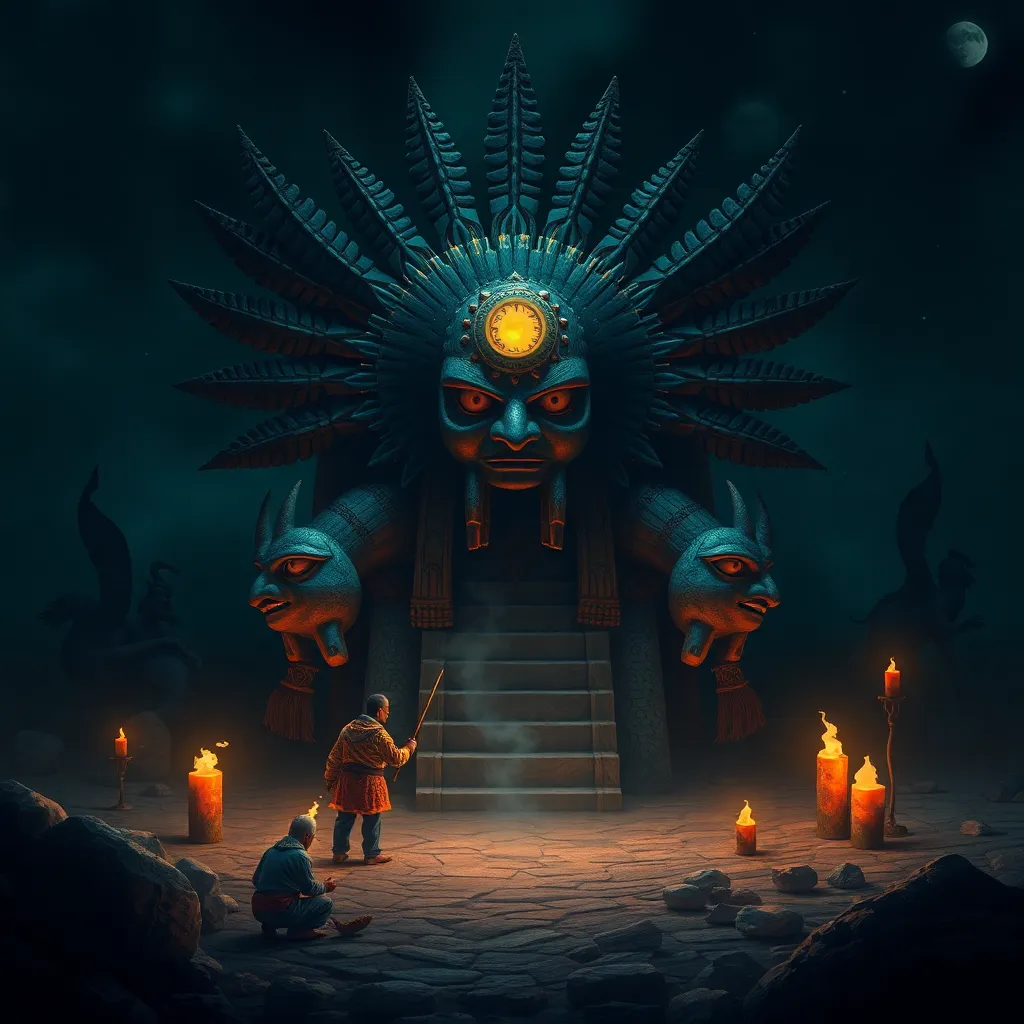The Sphinx as a Messenger of the Gods: Unveiling the Divine Will
I. Introduction
The Sphinx, a creature with the body of a lion and the head of a human, has captivated human imagination for millennia. This enigmatic figure, rooted in ancient mythology, is a powerful symbol that transcends cultures and epochs. In ancient Egypt, the Sphinx served not only as a guardian of sacred spaces but also as a divine messenger, conveying the will of the gods to humanity.
This article aims to explore the multifaceted role of the Sphinx in ancient mythology, its historical context, and its enduring significance as a messenger of the divine. By delving into its symbolism, mythological narratives, and its impact on culture and spirituality, we will uncover the deep connections between the Sphinx and the divine will.
II. Historical Context of the Sphinx
A. Origins of the Sphinx in Ancient Egypt
The Sphinx is believed to have originated in ancient Egypt around 2500 BCE. The most famous example, the Great Sphinx of Giza, stands sentinel near the pyramids, embodying the grandeur of the Pharaonic era. This monumental statue was carved from limestone and measures an impressive 240 feet long and 66 feet high, showcasing the Egyptians’ advanced engineering skills.
B. Evolution of the Sphinx’s Symbolism Through History
Over time, the symbolism of the Sphinx evolved. Initially viewed as a symbol of protection and strength, the Sphinx also came to represent wisdom and the mysteries of the universe. Its dual nature—both fierce and benevolent—allowed it to embody the complexities of existence.
C. The Sphinx in Relation to Egyptian Deities
The Sphinx is often associated with various deities, particularly with the sun god Ra and the goddess Hathor. Its position facing the east symbolizes the rising sun, linking it to rebirth and the afterlife. This connection emphasizes the Sphinx’s role as an intermediary between the gods and the pharaohs, guiding the latter in their divine duties.
III. The Sphinx in Mythology
A. The Sphinx in Greek Mythology: A Guardian and a Challenger
In Greek mythology, the Sphinx took on a different persona, becoming a guardian of Thebes. Here, it posed riddles to travelers, devouring those who failed to answer correctly. The most famous riddle, “What walks on four legs in the morning, two legs at noon, and three legs in the evening?” highlights the Sphinx’s role as both a protector and a challenger of knowledge.
B. Comparative Analysis with Other Cultures’ Sphinx-like Figures
Similar figures can be found in other cultures, such as the Chimaera in Greek mythology and the griffin in various ancient civilizations. Each of these creatures serves as a guardian and often conveys messages from the divine, illustrating a common theme of duality in mythological representations.
C. Mythological Tales Highlighting the Sphinx’s Role as a Divine Messenger
- The tale of Oedipus, who solved the Sphinx’s riddle and saved Thebes, emphasizes the importance of wisdom and knowledge in understanding divine will.
- In Egyptian myths, the Sphinx often guided souls through the afterlife, serving as a protector during their journey to the realm of the dead.
IV. Symbolism and Interpretation
A. Iconography of the Sphinx: Features and Their Meanings
The Sphinx’s iconography is rich with meaning. Its human head represents intelligence and wisdom, while its lion body symbolizes strength and power. This combination reflects the balance between intellect and might, essential qualities for both rulers and deities.
B. The Duality of the Sphinx: Protector and Punisher
The Sphinx embodies duality, acting as both a protector and a punisher. This duality reflects societal beliefs about the divine, where the gods could bestow blessings or deliver punishment based on human actions. The Sphinx’s riddles serve as a metaphor for the trials one must face to attain enlightenment.
C. How Interpretations of the Sphinx Reflect Societal Beliefs About the Divine
Throughout history, interpretations of the Sphinx have mirrored societal beliefs about the divine. In ancient Egypt, the Sphinx was seen as a benevolent guardian, while in Greek culture, it transformed into a fearsome challenger. These shifts illustrate the evolving relationship between humanity and the divine throughout different periods and cultures.
V. The Sphinx’s Role in Ancient Egyptian Religion
A. The Sphinx as a Guardian of Sacred Spaces
In ancient Egypt, the Sphinx was often positioned at the entrance of temples and tombs, serving as a guardian of sacred spaces. Its imposing presence was believed to protect the sanctity of these sites, deterring any malevolent forces.
B. Rituals and Practices Involving the Sphinx
Rituals surrounding the Sphinx often included offerings and prayers, aimed at invoking its protection. The Sphinx was also a central figure in various ceremonies that honored the gods and sought their favor.
C. The Sphinx’s Relationship with the Pharaoh as an Intermediary of the Gods
The Sphinx played a critical role in the relationship between the Pharaoh and the gods. Pharaohs were seen as divine representatives on earth, and the Sphinx acted as a conduit through which they could communicate with the divine. This relationship underscored the Pharaoh’s authority and legitimacy as a ruler.
VI. The Sphinx in Art and Literature
A. Depictions of the Sphinx in Ancient Art Forms
Ancient art is replete with depictions of the Sphinx, from monumental statues to intricate carvings. These representations often emphasize its regal nature and its connection to the divine, showcasing the artistry and spiritual beliefs of the time.
B. Literary References to the Sphinx as a Symbol of Divine Will
The Sphinx has also made its mark in literature, symbolizing the mysteries of existence and the quest for knowledge. In works such as Sophocles’ “Oedipus Rex,” the Sphinx embodies the challenges one must overcome to understand one’s fate and the will of the gods.
C. The Enduring Legacy of the Sphinx in Modern Culture
Today, the Sphinx continues to inspire artists, writers, and filmmakers. Its symbolism has permeated popular culture, often representing enigma, wisdom, and the quest for truth. The Sphinx serves as a reminder of our enduring fascination with the divine and the mysteries of life.
VII. The Sphinx as a Subject of Modern Interpretation
A. Contemporary Views on the Sphinx’s Message and Symbolism
Modern interpretations of the Sphinx often focus on its role as a symbol of self-discovery and enlightenment. Many view it as a guide in the search for meaning and understanding of one’s place in the universe.
B. The Role of the Sphinx in Popular Culture and Media
In contemporary media, the Sphinx appears in various forms, from films to video games, often portrayed as a wise figure that challenges protagonists to solve riddles or confront their own fears. This portrayal highlights the Sphinx’s role as a catalyst for growth and self-awareness.
C. Reinterpretations of the Sphinx’s Divine Messaging in Modern Spirituality
Modern spiritual movements often reinterpret the Sphinx’s message as a call to introspection and personal empowerment. The Sphinx is seen as a symbol of the journey towards understanding one’s divine purpose and the interconnectedness of all beings.
VIII. Conclusion
In conclusion, the Sphinx remains a powerful symbol of the divine will, bridging the gap between humanity and the gods. Its rich historical context, profound mythology, and multifaceted symbolism underscore its significance not only in ancient cultures but also in contemporary society.
Understanding the Sphinx as a messenger of the gods provides valuable insights into ancient beliefs and the enduring quest for knowledge and enlightenment. As we reflect on its legacy, we recognize that the mysteries of the Sphinx continue to inspire and challenge us, inviting us to explore the divine connections that shape our existence.




